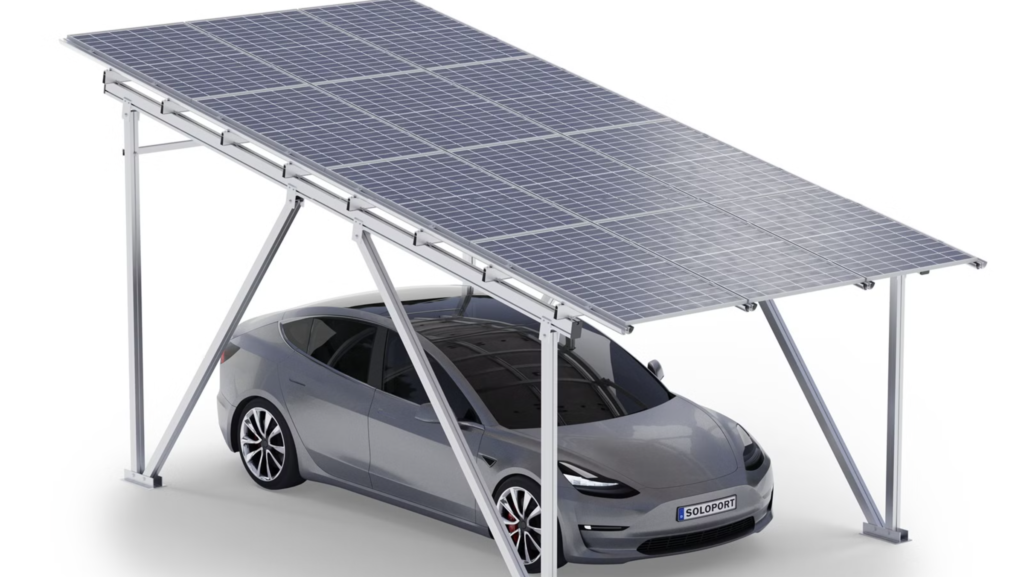Monocrystalline silicon solar panels have been widely applied in multiple fields due to their high efficiency and stable performance characteristics. The following are the main application scenarios of monocrystalline silicon solar panels
Large-scale ground-mounted photovoltaic power stations
Description: Large-scale ground-mounted photovoltaic power stations are an important application scenario for monocrystalline silicon solar panels. By forming an array of a large number of monocrystalline silicon solar panels, solar energy can be efficiently converted into electricity and connected to the power grid, providing clean and renewable electricity for society.
Features: In regions with abundant land resources and favorable sunlight conditions, monocrystalline silicon solar panels, due to their high conversion efficiency, can maximize the utilization of solar energy resources and achieve large-scale power generation.
2. Distributed photovoltaic power generation system
Monocrystalline silicon solar panels are also widely used in distributed photovoltaic power generation systems, including rooftop photovoltaic systems in commercial buildings, public facilities (such as schools and hospitals), and residential buildings.
Features: These systems are usually installed on the rooftops of buildings, generating electricity by utilizing the idle roof space. They can not only meet their own electricity demands but also feed the excess electricity into the power grid, achieving energy sharing and benefits. The high efficiency of monocrystalline silicon solar panels enables these systems to generate more electricity within a limited installation space.
3. Off-grid power supply system
Description: In remote areas, islands and other places that cannot be connected to the national power grid, monocrystalline silicon solar panels serve as independent power sources, combined with energy storage devices (such as batteries), to provide power supply for communication base stations, monitoring equipment, small communities, etc.
Features: Monocrystalline silicon solar panels can generate electricity stably even in weak light conditions, and they have a long lifespan and high reliability, making them highly suitable for off-grid scenarios where high stability of power supply is required.
4. Mobile energy applications
Description: In fields such as vehicles (like electric vehicles and recreational vehicles), ships, and unmanned aerial vehicles, monocrystalline silicon solar panels can serve as auxiliary power sources, using sunlight to charge on-board devices, thereby enhancing energy utilization efficiency and endurance.
Features: Monocrystalline silicon solar panels are lightweight and portable, capable of adapting to various complex installation environments and providing long-lasting power support for mobile devices.
5. Outdoor portable power supply
Monocrystalline silicon solar panels are also widely used in outdoor portable power sources, such as solar power banks and solar power generation devices for outdoor tents.
Features: These devices facilitate the charging of electronic devices during outdoor activities. The high conversion efficiency of monocrystalline silicon solar panels ensures the speed and effectiveness of charging.
6. Power supply for agricultural facilities
Description: In modern smart agriculture, monocrystalline silicon solar panels power agricultural facilities such as intelligent irrigation systems and greenhouse supplementary lighting, achieving green and energy-saving operation.
Features: Monocrystalline silicon solar panels can stably provide power support for agricultural facilities, reducing energy consumption and carbon emissions in agricultural production.
7. High-end market and special application scenarios
Description: Due to the high efficiency and stability of monocrystalline silicon solar panels, they are also often used in some special application scenarios with high requirements for power supply or harsh environmental conditions, such as aerospace and offshore platforms.
Feature: In these scenarios, monocrystalline silicon solar panels can provide stable and reliable power support, ensuring the normal operation of equipment and the successful completion of tasks.
8. Rooftop photovoltaic systems for households and small industrial and commercial households
Description: With the advancement of technology and the reduction of costs, monocrystalline silicon solar panels have gradually entered the household and small industrial and commercial rooftop photovoltaic markets.
Features: These systems are typically installed on the rooftops of residential or small industrial and commercial buildings, generating electricity by utilizing the idle roof space. They can not only meet their own electricity demands but also feed the excess electricity into the power grid, achieving energy sharing and benefits. The high efficiency of monocrystalline silicon solar panels enables these systems to generate more electricity within a limited installation space.
In summary, monocrystalline silicon solar panels have been widely applied in multiple fields due to their high efficiency and stable performance characteristics. With the advancement of technology and the reduction of costs, its application scope will continue to expand, making greater contributions to the global energy transition and sustainable development.


